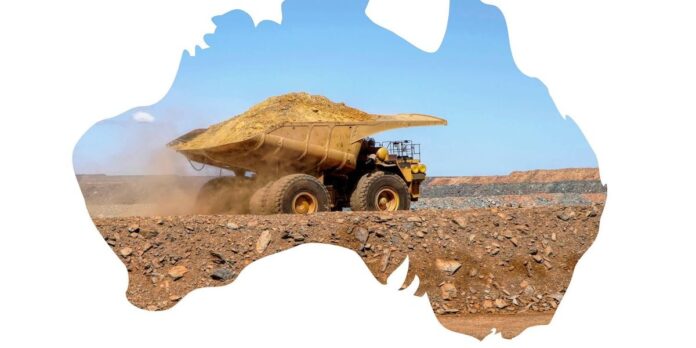Introduction to Australia’s Mining Sector
Mining remains a crucial part of Australia’s economy, contributing significantly to its GDP and export earnings. However, the industry is facing challenges due to global trade disputes and price fluctuations. A recent report by FocusEconomics explored Australia’s resource wealth, from the gold rushes of the 1850s to the current iron ore and coal booms.
The Mining Super Cycle: Real or Hype?
The Corporate Finance Institute defines a "super cycle" as a prolonged period of strong economic growth, often driven by increased commodity demand and prices. Australia has previously experienced such cycles, particularly during China’s infrastructure expansion in the early 2000s. The report suggests that the global push for decarbonization could spark a new super cycle, focusing on critical minerals like lithium, nickel, copper, and cobalt. These resources are essential for electric vehicles, renewable energy storage, and digital technologies.
Current Trends and Investments
In the year leading up to October 2022, the value of committed mining and energy projects in Australia surged by 54 percent to AU$83 billion. However, most of this investment (around 64 percent) was still directed toward gas and coal. According to Vivek Dhar, lead mining and energy commodities strategist at Commonwealth Bank, "Claims that Australia is on the verge of another mining boom are premature." High demand for energy transition metals is expected by 2030, but the evidence does not yet point to the start of a "green" mining super-cycle.
Gold in Australia’s Mining Economy
Gold remains a vital part of Australia’s mining economy, with the country hosting the world’s largest known gold reserves. According to the Minerals Council of Australia (MCA), gold exports generated AU$34.23 billion in revenue in the 2023-24 financial year. Gold is not only a safe-haven asset but also increasingly important in high-tech applications, such as electronics and medicine. The gold sector directly employs around 26,000 Australians and supports another 55,000 indirectly.
Challenges Facing the Australian Resource Sector
The Australian resource sector is subject to several challenges, including inflation, trade ties with China, and climate risk. The Reserve Bank of Australia is battling inflation, while high interest rates are straining household budgets and dampening consumer confidence. Trade-wise, Australia’s deep ties with China pose both opportunities and risks. Climate risks are also casting a shadow over Australia’s mining future, with extreme weather events threatening infrastructure and resource operations.
Suggestions for Improvement
To address these challenges, Australia needs to focus on several key areas. Firstly, it must address its flagging productivity growth, tackle the housing affordability crisis, and manage the economic transition to a low-carbon future. Diversifying trade relationships and moving up the value chain from simply exporting raw materials will also be crucial. Australia’s highly skilled workforce, strong institutions, abundant land and energy resources, and low public debt are factors that can be leveraged for continuous development.
What’s Next for Investors?
For investors eyeing Australia’s mining sector, the message is clear: opportunities and risks coexist. The country’s large reserves of lithium, gold, and iron ore give it a strong advantage in the next wave of global industry. However, to make the most of these resources, Australia will need smart investments, better policies, and a broader strategy to create long-term value. The FocusEconomics report notes that Australia’s economic resilience has long been tied to its ability to adapt. Whether the next mining super cycle is already underway or waiting to emerge will depend on how quickly Australia can implement a resource strategy that can keep up with the demands of a changing world.
Conclusion
In conclusion, Australia’s mining sector is facing both opportunities and challenges. While the country has a strong advantage in terms of its resource wealth, it must address its flagging productivity growth, tackle the housing affordability crisis, and manage the economic transition to a low-carbon future. By diversifying trade relationships, moving up the value chain, and leveraging its highly skilled workforce and strong institutions, Australia can create a bright future for its mining sector and ensure long-term economic resilience. As the global economy continues to evolve, Australia’s ability to adapt and innovate will be crucial in determining its success in the next wave of global industry.

